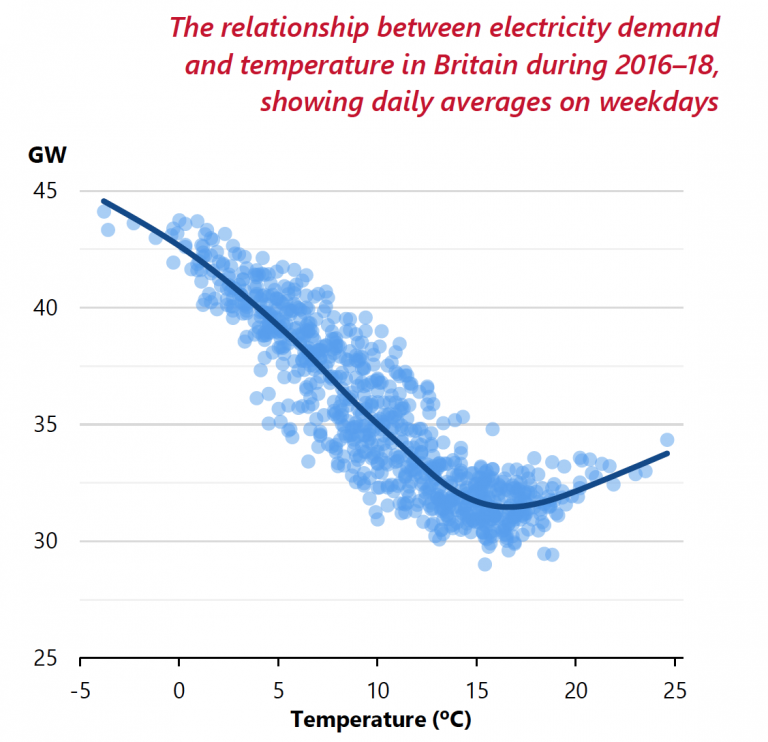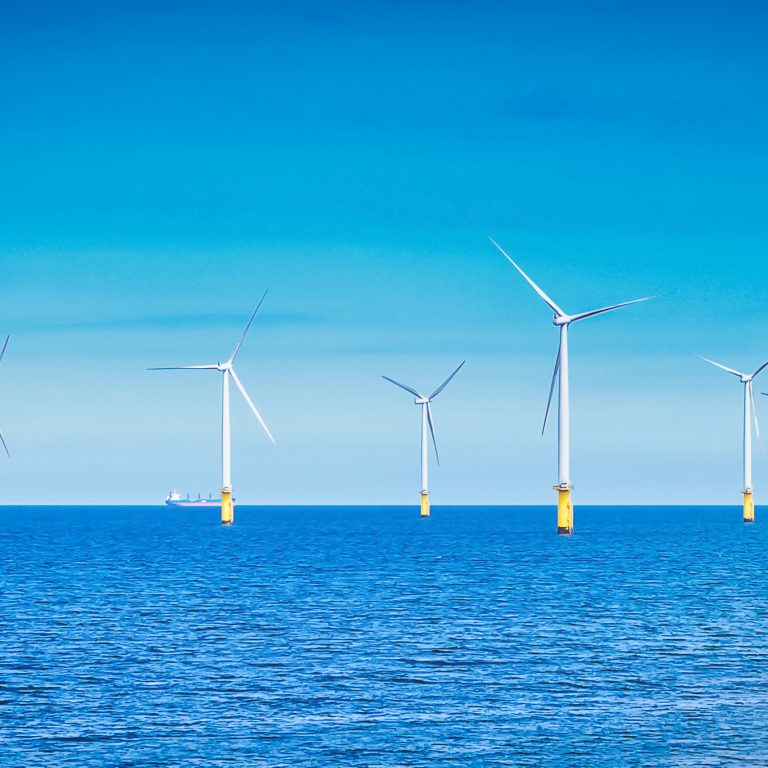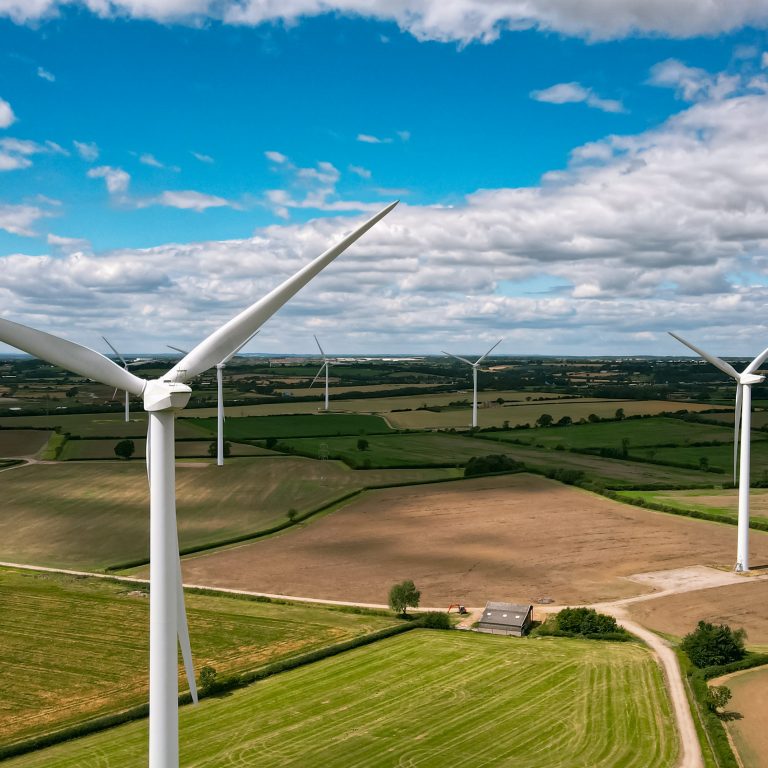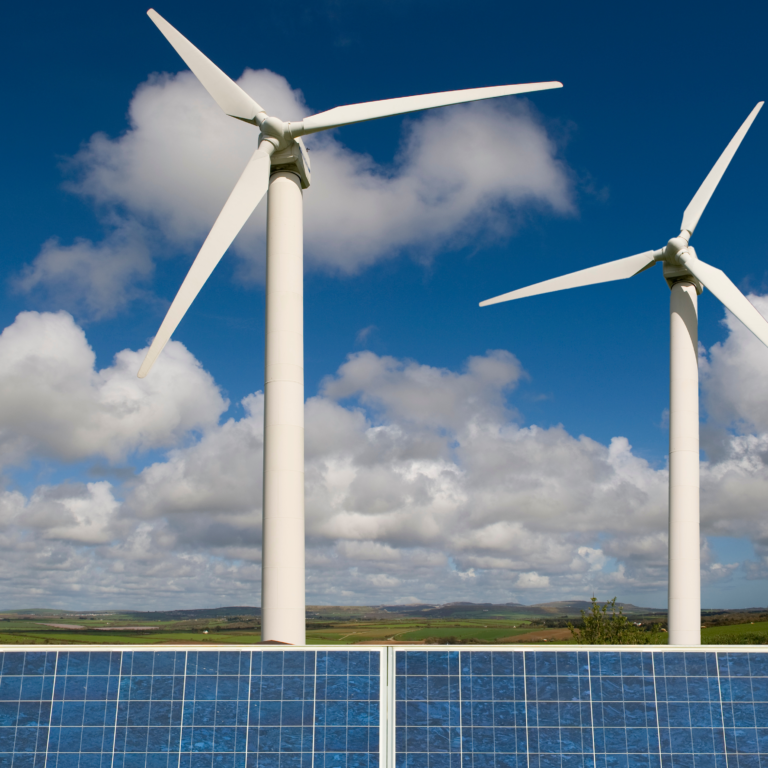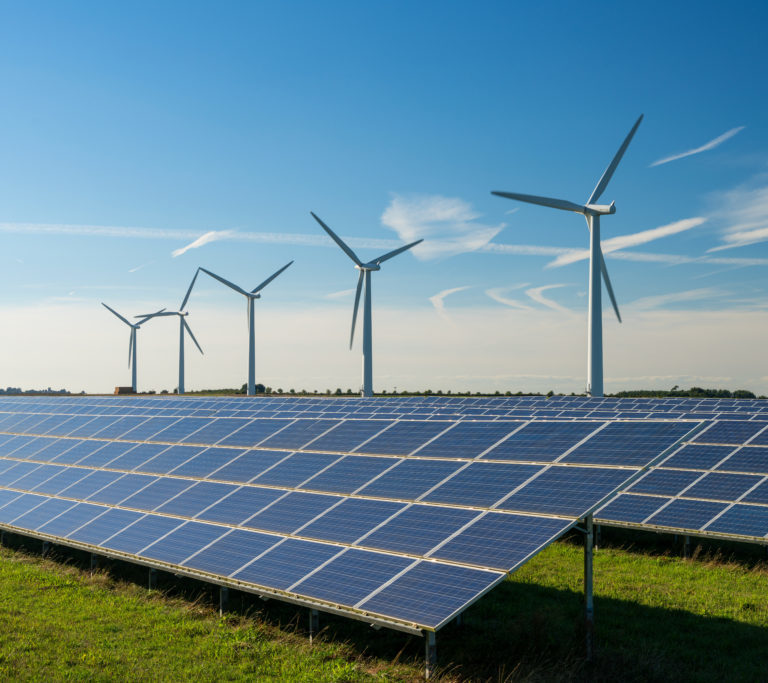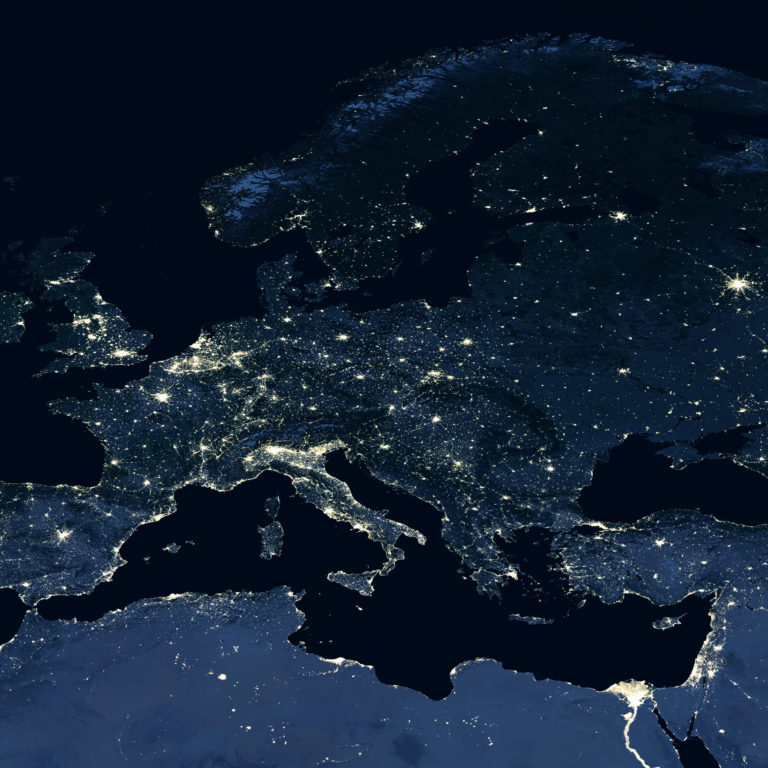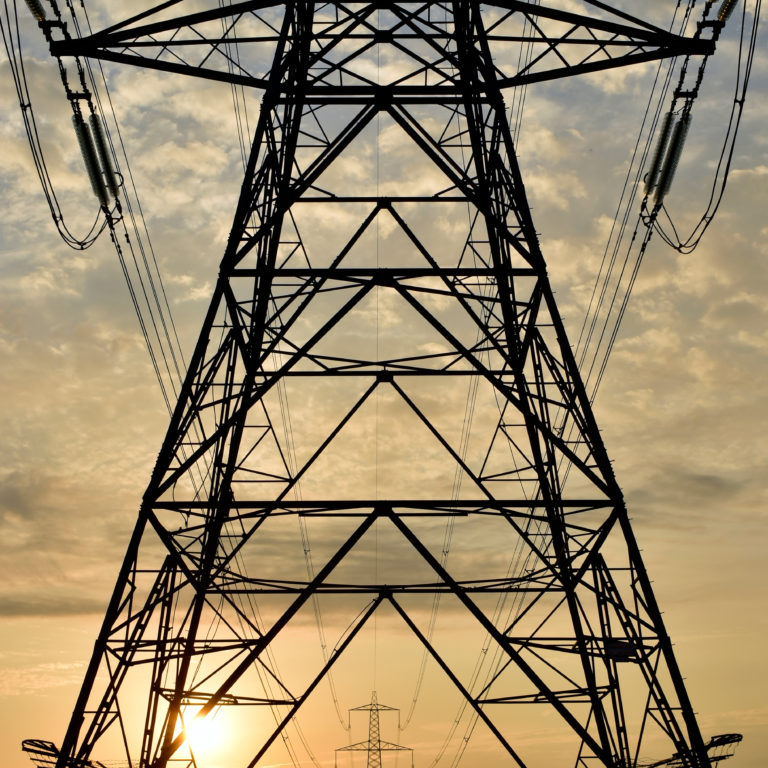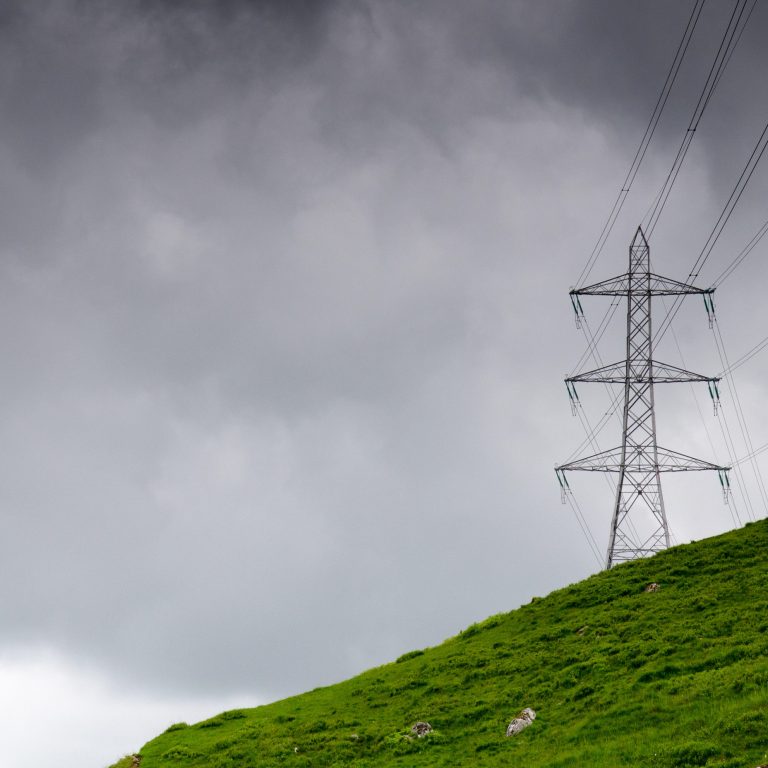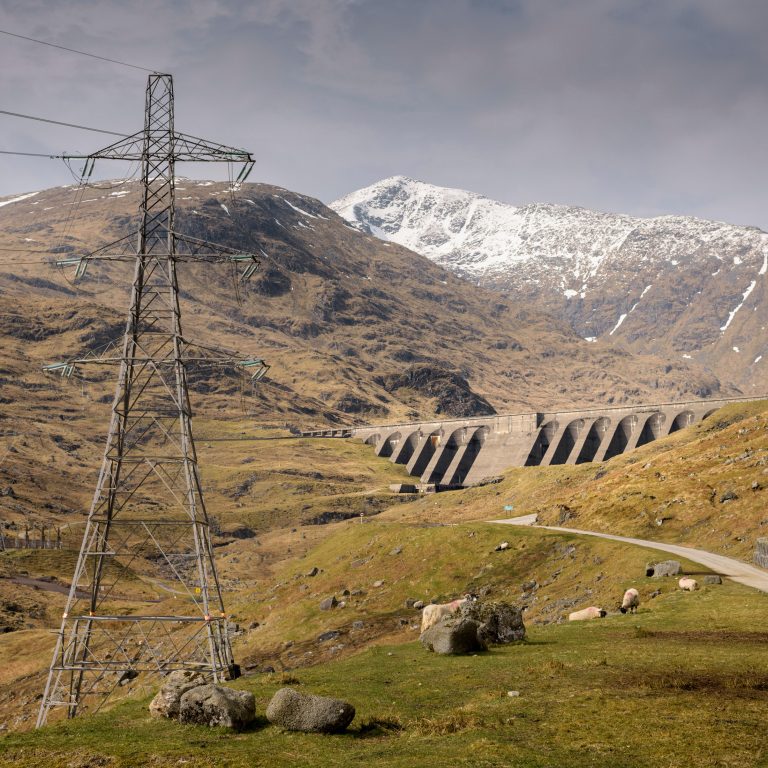16.5 degrees is the Goldilocks temperature for the Brits – not hot enough for air-con, not too cold to put the heating on. In March we saw how the Beast from the East caused a surge in demand, now the long summer heatwave is doing the same.
June 23rd marked the start of the heatwave, with daytime temperatures surpassing 30°C in Scotland and Wales. The last week of June was 3.3°C warmer than the previous week, and demand was 860 MW higher (see chart below). This rise is equivalent to power demand from an extra 2.5 million households.
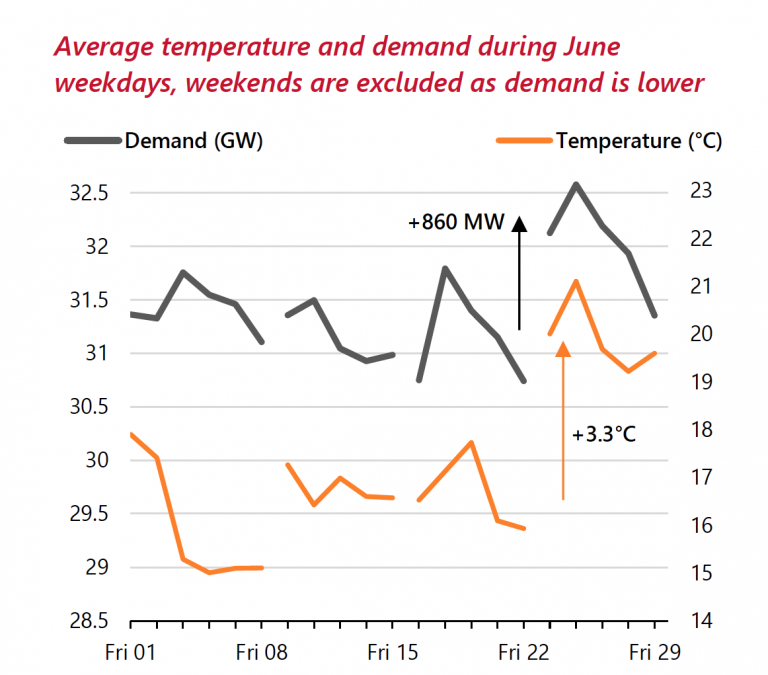
This reflects the growing role of air conditioning and refrigeration in shops, and cooling for data centres. Global electricity demand from cooling is rising dramatically, and is seen as a ‘blind spot’ in the global energy system. This will become more important as global temperatures, and more importantly, global incomes rise. However, it is easier to deal with than cold spells during winter because demand is low and solar PV output is high.
Below 14°C, demand increases by 750 MW for every degree it gets colder as buildings need more heating. Around a tenth of British homes have electric heating, as do half of commercial and public buildings. And while the UK is not synonymous with air conditioners, demand rises by 350 MW for each degree that temperature rises above 20°C.
This effect may well grow stronger in the coming years. National Grid expect that the peak load from air conditioners will triple in the coming decade. Perhaps events such as the current prolonged heatwave may spur more households to invest in air conditioning.
